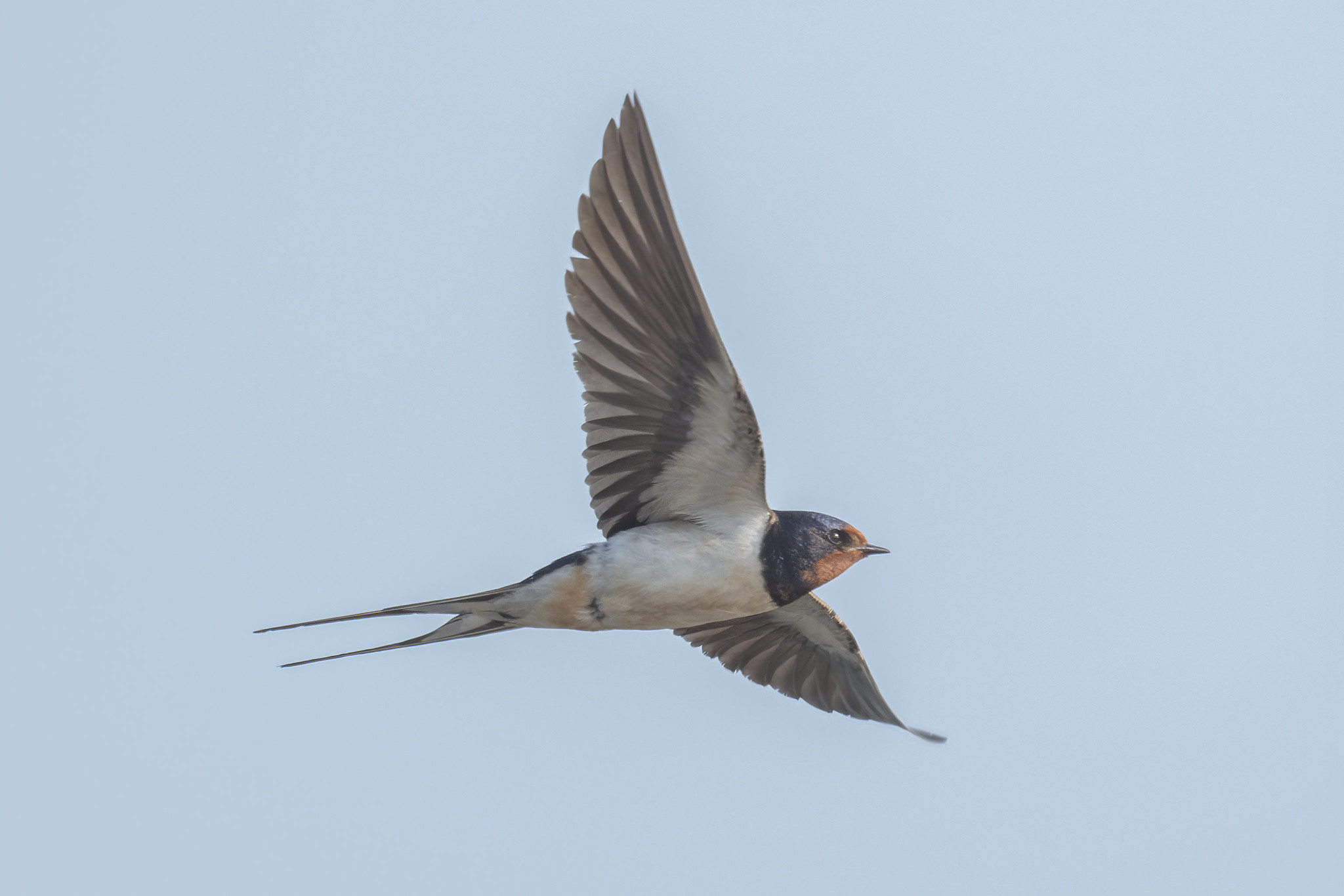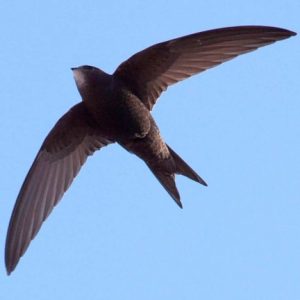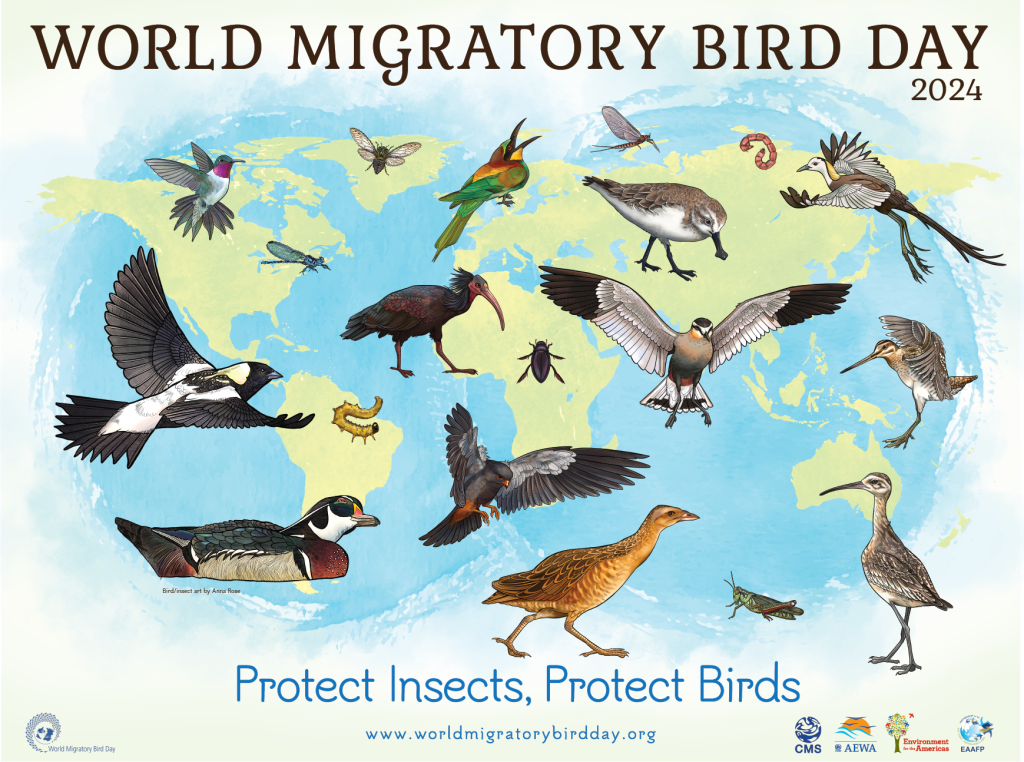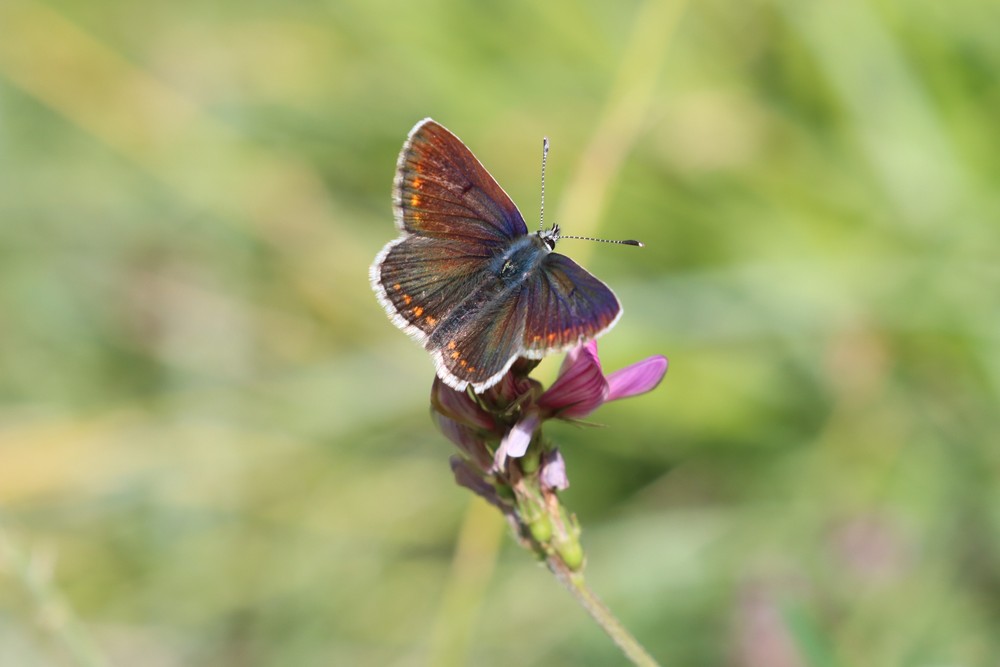World Migratory Bird Day (Spring) – 11th May 2024

Celebrated twice a year to coincide with the two migratory patterns, this year’s World Migratory Bird Day is looking at the importance of insect populations for migratory birds. Insects offer vital energy for migratory birds, providing a rich source of nutrients crucial for their survival on the journey and at other stages of their life cycles, particularly when feeding their offspring. An analysis in the journal Science revealed that we are losing roughly 9% of the world’s insect population each decade, and this decline is having serious implications for migratory birds.
Insects are crucial for migratory species. The presence of insects greatly influences the timing, duration, and overall success of their migrations. During stopovers at various locations along their migration routes, birds actively forage for insects in fields, forests, wetlands, and other habitats. They catch flying insects in mid-air, or they search for insects among leaves, bark, and vegetation. Many of these migratory journeys coincide with peak insect abundance in their stopover areas, meaning reductions in insects leads to less food for the birds making these journeys, and ultimately less chance of a successful migration.
 Insect populations are in decline globally, and this phenomenon is mirrored by a decrease in populations of birds that depend on insects for their survival. This reliance on insects is especially pronounced for species such as spotted flycatchers, swallows (pictured top), and swifts (pictured left), all species that have faced rapid declines in population in recent years. Many other bird species, such as ducks or shorebirds and some raptors, also depend on insects during migration and other stages in their lifecycle, in particular for raising their young before they are able to fly.
Insect populations are in decline globally, and this phenomenon is mirrored by a decrease in populations of birds that depend on insects for their survival. This reliance on insects is especially pronounced for species such as spotted flycatchers, swallows (pictured top), and swifts (pictured left), all species that have faced rapid declines in population in recent years. Many other bird species, such as ducks or shorebirds and some raptors, also depend on insects during migration and other stages in their lifecycle, in particular for raising their young before they are able to fly.
There’s no one answer as to what is causing this decline in insect populations. Deforestation, industrial agriculture, the overuse of pesticides, light pollution, and the effects of climate change are all having impacts on insects and their lifecycles. However, there are changes we can make to help aid the recovery of insect species and benefit migratory birds. Restoring grassland ecosystems is vital to restore insect and migratory bird populations globally. This could involve adding flower strips, removing chemicals and pesticides or adopting regenerative farming principles in land use. Maintaining and restoring water bodies is also essential for protecting insectivorous aquatic communities, which includes many water bird species.
The monitoring of insects and migratory birds is a key indicator for us to track populations and species and can help aid current and future nature recovery projects. Here in the Galloway and Southern Ayrshire Biosphere, there are a wide range projects taking place tracking insects to help aid conservation efforts. One project is Dumfries & Galloway Moths, who track the roughly 1200 species of moth in the region. Moths, like many insects, are sadly in decline, but as an important part of the food chain for migratory birds, including the nightjar, it’s important that their populations are recorded. Some of the rare and special moths you might see within the Biosphere include the narrow-bordered bee-hawk moth (known for its bee-like appearance), the argent & sable (a special day-flying moth often found in wetland habitats) and the forester moth (a rare moth found more towards Castle Douglas and Kirkcudbright area).
The South West Scotland Environmental Information Centre (SWSEIC) covers Dumfries and Galloway and Ayrshire and maintain a database of wildlife and habitat records across the regions, including insects. Malcolm from SWSEIC has provided a guide to some of the rare and special insects we have in this region that you might spot whilst out and about in the Biosphere:
 Speckled bush cricket (Almost entirely restricted to the Biosphere in Scotland, minus a Midlothian population)
Speckled bush cricket (Almost entirely restricted to the Biosphere in Scotland, minus a Midlothian population) - Dark bush cricket (Only known in two sites in the Biosphere for the whole of Scotland)
- Musk beetle (An uncommon beetle that thrives in the Galloway Forest Park)
- River skater (Only sighted within the GSA Biosphere in Scotland)
- Dingy skipper (A rare local butterfly found in the Ayrshires & D&G)
- Northern brown argus (Pictured right, often found on the Solway coast)
- Wool-carder bee (A distinct, solitary bee species that can be found in the Biosphere)
- Wall mason bee (Found in very few sites across Scotland; the Biosphere is the only recorded site in the South)
If you want help contribute to citizen-science and record species whilst exploring the region, the iNaturalist app is a great way to identify and log insects, birds, plants and wildlife.
The Galloway and Southern Ayrshire Biosphere Partnership works with a wide range of partners to support projects that help enhance and monitor wildlife and habitats. If you spot any migratory birds or insects whilst out and about this World Migratory Bird Day, we would love to hear from you and see any pictures. Additionally, if you’re a landowner and are interested in exploring ways of enhancing habitats for insects, birds and other wildlife, we have a specialist Land Use & Biodiversity team who would be happy to advise on this. Contact us at info@gsabiosphere.org.uk.
Feature Image: “Swallow – Hirundo rustica” by cazalegg is licensed under CC BY 2.0.


 Speckled bush cricket
Speckled bush cricket